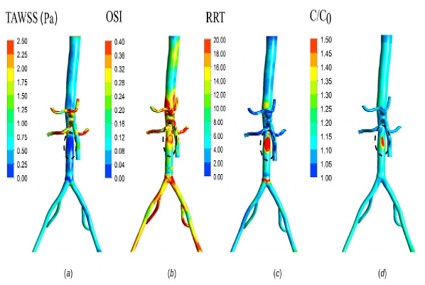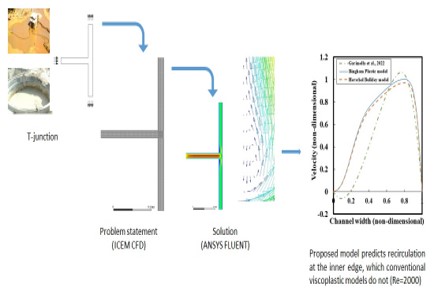 | Chemical Engineering
| Chemical Engineering
“Interdisciplinary, problem-focused approaches yield new insights into the behaviour of biological tissues in health and disease.”
We develop and apply mathematical models and computational tools to study problems in Cardiovascular Mechanics and Complex Fluid Rheology. We use these to propose hypotheses and workflows that can be tested by experiments and clinical practice, respectively.
1. Efficient software to detect atherosclerosis: Sequential code developed for blood flow is time-consuming and unsuited for use by doctors. We seek to enhance the speed of the sequential code by parallelism and develop a workflow using patient CT scans.
2. FEM for blood flow with clot formation in a flexible-walled artery: We seek to demonstrate the potential of commercial software for clinical use by testing it for a specific fluid-solid interaction problem.
3. A new fluid model that mimics viscoplastic fluids: Conventional viscoplastic “fluid” models have a yield stress term that contradicts the definition of a fluid. They are also difficult to implement in 3D flows. The new fluid model proposed shows promising results in classical BVPs and has been used in a CFD study.
4. Linear Stability Analysis of a new fluid model: The neutral stability region of the fluid model that mimics viscoplastic fluids is established by classical Linear Stability Analysis methods.


1.Anand M, Panteleev MA, & Ataullakhanov FI (2022). Computational models of hemostasis: Degrees of complexity, Applications in Engineering Science, 10: 100103.
2.Ameenuddin M, & Anand M (2020). A mixture theory model for blood combined with low-density lipoprotein transport to predict early atherosclerosis regions in idealized and patient-derived abdominal aorta, Journal of Biomechanical Engineering, 142(10): 101008.
3.Anand M, Kwack J, & Masud A (2013). A new generalized Oldroyd-B model for blood flow in complex geometries, International Journal of Engineering Science, 72:78-88.